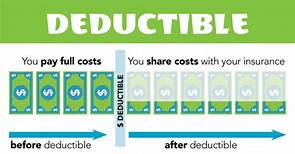What Is an Annual Deductible for Pet Insurance?
Pet insurance can help you cover the costs of unexpected veterinary expenses, such as accidents, illnesses, and routine care. However, most pet insurance policies have an annual deductible, which is the amount you must pay out of pocket before the insurance company starts to cover your claims. The amount of your annual deductible can vary depending on the type of policy you choose and the company you purchase it from.

How Does an Annual Deductible Work?
When you file a claim with your pet insurance company, you will first be responsible for paying the annual deductible. Once you have met your deductible, the insurance company will then start to cover your claims, up to the limits of your policy. For example, if you have a $500 annual deductible and you file a claim for a $1,000 veterinary bill, you would be responsible for paying the first $500. The insurance company would then cover the remaining $500.
Types of Annual Deductibles
There are two main types of annual deductibles for pet insurance: flat deductibles and per-incident deductibles.
- Flat deductibles: A flat deductible is a fixed amount that you must pay out of pocket before the insurance company starts to cover your claims. For example, you might have a $500 flat deductible on your pet insurance policy.
- Per-incident deductibles: A per-incident deductible is an amount that you must pay out of pocket for each separate veterinary visit or incident. For example, you might have a $100 per-incident deductible on your pet insurance policy. This means that you would have to pay the first $100 of each veterinary bill, regardless of the total cost of the visit.
Which Type of Deductible Is Right for You?
The type of annual deductible that is right for you depends on your budget and your pet's health. If you have a healthy pet and you are on a tight budget, you might choose a higher annual deductible to keep your premiums low. However, if you have a pet with a pre-existing condition or if you are worried about unexpected veterinary expenses, you might choose a lower annual deductible to give you more peace of mind.
How to Choose the Right Annual Deductible
When choosing an annual deductible for your pet insurance policy, there are a few things you should keep in mind:
- Your budget: How much can you afford to pay out of pocket for veterinary expenses before the insurance company starts to cover your claims?
- Your pet's health: Does your pet have any pre-existing conditions or is he or she prone to accidents or illnesses?
- The type of coverage you want: Some pet insurance policies offer more comprehensive coverage than others. If you want a policy that covers a wide range of veterinary expenses, you might need to choose a lower annual deductible.
- The cost of premiums: The higher your annual deductible, the lower your premiums will be. However, you need to make sure that you choose an annual deductible that you can afford to pay.
Conclusion
Choosing the right annual deductible for your pet insurance policy is an important decision. By carefully considering your budget, your pet's health, and the type of coverage you want, you can choose an annual deductible that meets your needs and provides you with the peace of mind you deserve.
Declaration: All article resources on this website, unless otherwise specified or labeled, are collected from online resources. If the content on this website infringes on the legitimate rights and interests of the original author, you can contact this website to delete it.





